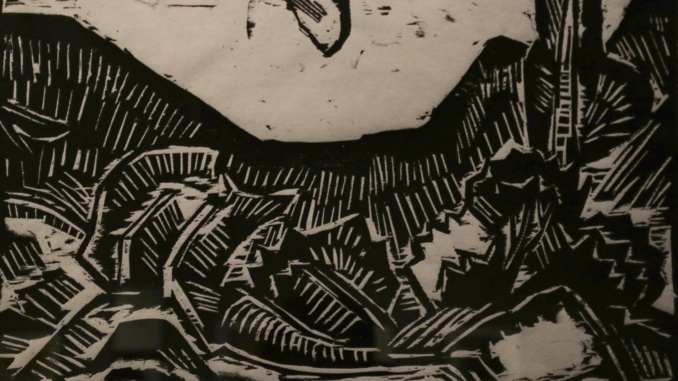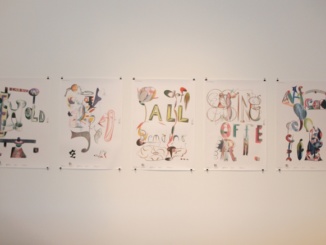
By Kaelie Macaulay
Staff Writer
LACMA’s newest exhibit, “Form in Fragments: Abstraction in German Art” is a small, simple exhibit with a diverse range of media that aims to explore abstract tendencies in German Expressionism.
Consisting of 60 pieces drawn on paper from LACMA’s collection and a selection of artist, Hans Richter’s abstract films, the exhibit is an informative, modest demonstration that highlights the concept of abstraction in Expressionism throughout the German culture.
Expressionism was a modernist movement that originated at the beginning of the 20th century in Germany. The main goal of Expressionism is to view the world from a subjective perspective and to warp it to evoke certain emotions.
Expressionists generally depict nature, the body, life and the human psyche using stylistic techniques including geometrization, dissolution and elevated contrast levels. The utilization of these of these strategies cause them to identify with abstraction.
Set up in a modest-sized room, the exhibit features a selection of small-scale, monochromatic drawings that represent different abstract points of view. The minuscule size of the paintings forces the viewers to look closer and truly observe the unique fragments of the drawings.
Since the drawings are generally miniature, they allow room for more pieces to be held in the exhibit. Although the setting of the display was compact, the large amount of pieces compensates for the somewhat cramped space.
Depicted in the video above, Expressionism was a modernist movement that originated in 20th century Germany and often demonstrated characteristics of abstraction. Expressionism generally includes a wide range of abstraction styles and tendencies with the intention of presenting the world from a subjective perspective. Courtesy of Chrissy Syracuse via Youtube.
The exhibit showcases a variety of distinctive styles of abstract trends in German Expressionism. Ranging from film to literature, LACMA does a stellar job of representing a mixed variety of art mediums. The inclusion of diverse medias allows the audience to experience a well-rounded and introspective exhibit.
The minuscule, monochromatic drawings hung on the walls of the gallery provoke thought into how abstraction evolved the traditional German Expressionism. With intricate details, the drawings, accompanied by their information pamphlets, form an educational and entertaining exhibit.
Unfortunately, the exhibition is confusingly placed in a nook within the museum which makes it difficult for viewers to locate. The entrance is awkwardly situated, causing viewers to overlook it without hesitation.
“Form in Fragments: Abstraction in German Art” successfully examines the history behind German abstraction in expressionism and presents an informative exhibit featuring a varied selection of art styles and medias. LACMA’s newest exhibit impresses with its ability to illustrate the essence of abstraction.
“Form In Fragments: Abstraction in German Art” is available for viewing until Sept. 24 on the second level of the Ahmanson Building at LACMA located at 5905 Wilshire Blvd, Los Angeles.




Leave a Reply